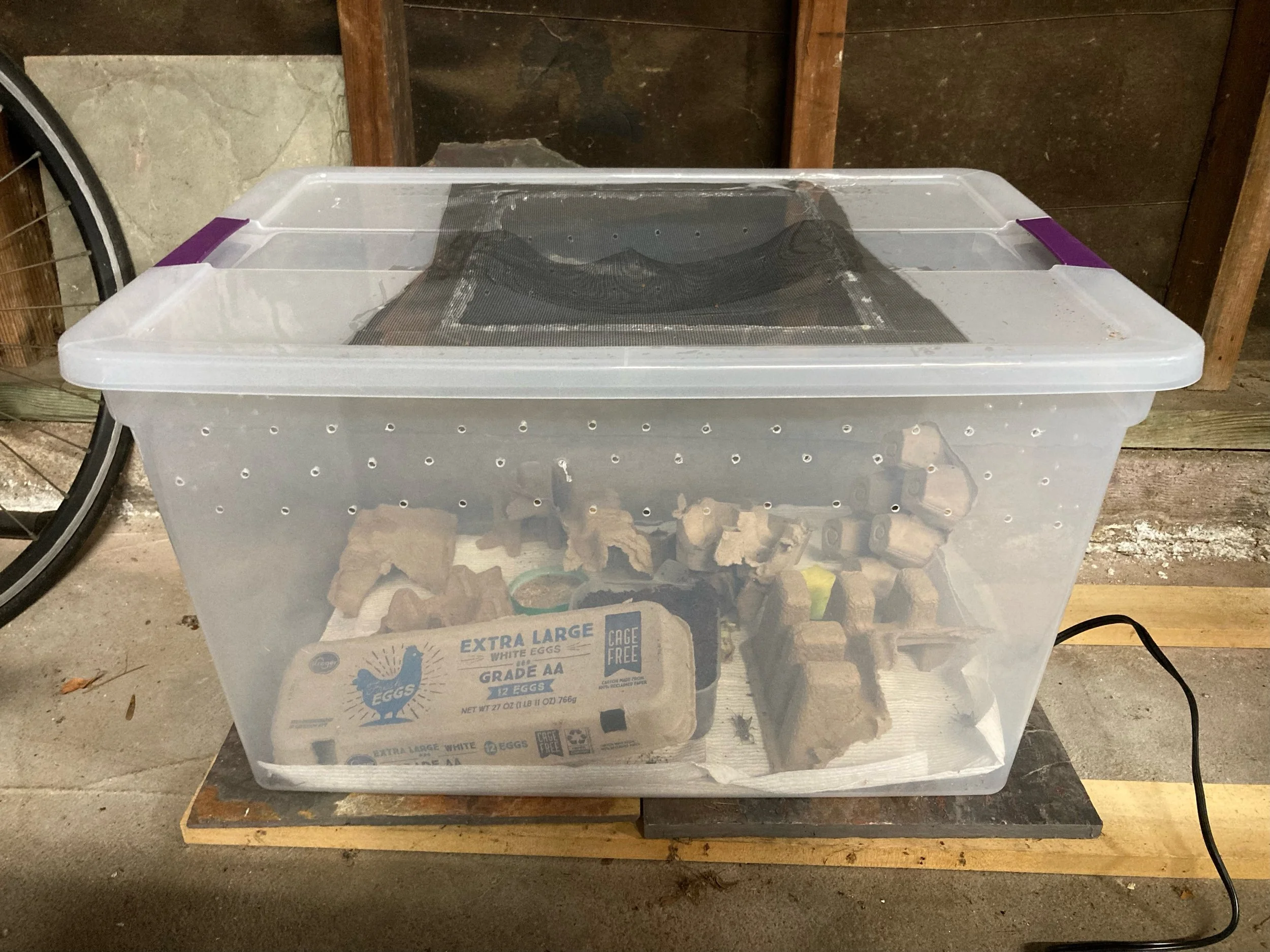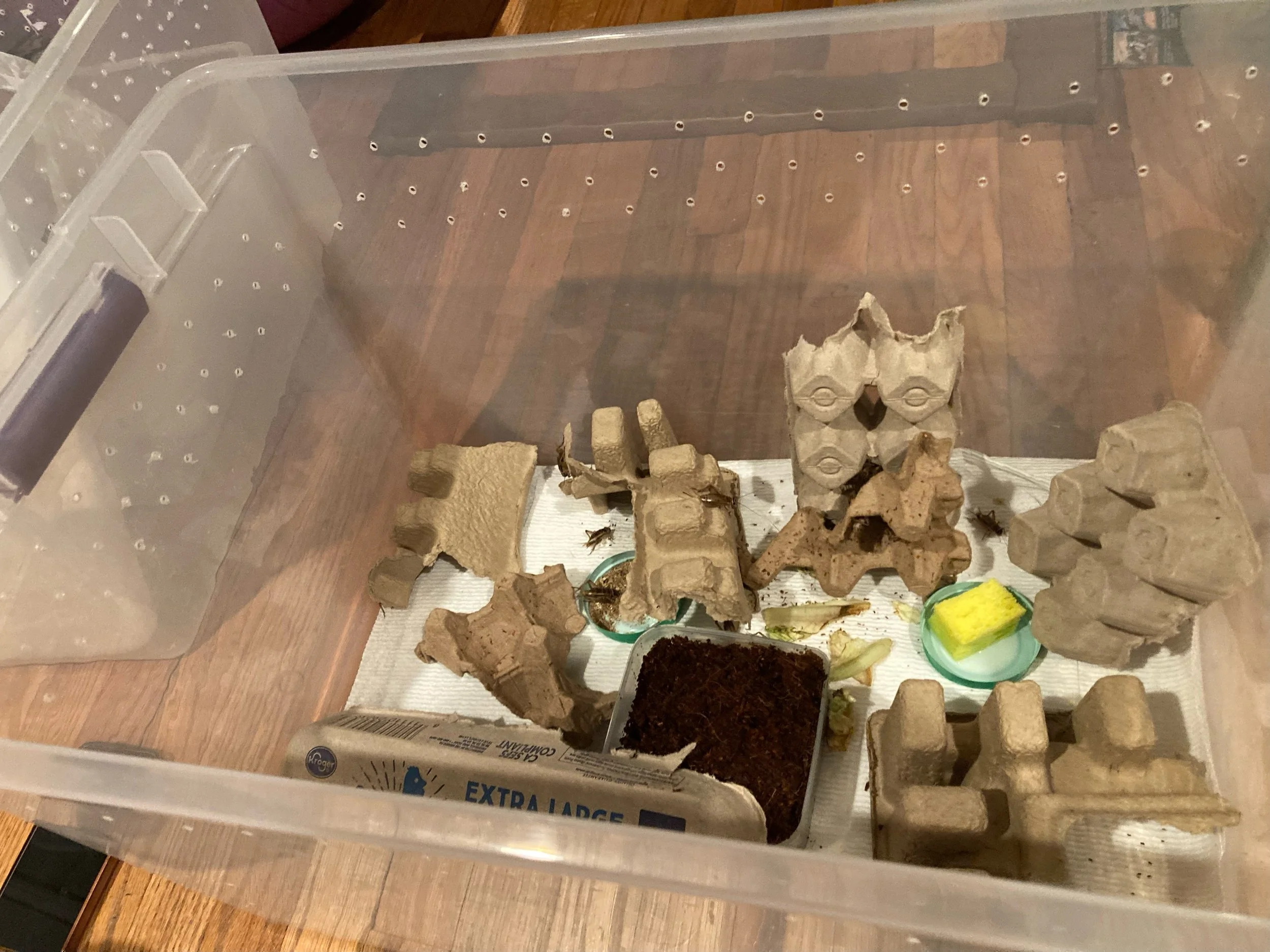DIY - Cricket Tubs
Crickets are the favorite food of many arachnids and reptiles. It might be necessary to house crickets in preparation to feed a pet or breed them to provide a cheap food source. Young children might enjoy keeping one or more crickets as a pet to observe.
Unlike many other bugs, crickets can be tricky to keep alive for more than a few days. Creating a DIY cricket bin is one of the best ways to raise them.
A large plastic storage bin can be converted into a suitable enclosure. Ventilation is crucial for cricket housing. The lid must have a large mesh window, which can be made with a box cutter or soldering iron (obviously children CANNOT participate in this part). Ventilation mesh can be found at a hardware store. This mesh is designed to repair screen doors and will keep bugs in while allowing plenty of air flow.
To allow air flow through the bin, drill rows of small holes around the sides. Once again, only adults can perform this step. If there is not enough ventilation on the top and sides, ammonia will build up in the enclosure and cause your crickets to die. Crickets cannot climb smooth plastic, so as long as the holes are fairly high up even small crickets will not be able to escape.
For substrate, we recommend a layer of paper towels or nothing at all. Low humidity is needed for adult crickets, so any substrate that holds moisture can be dangerous to them.
Make sure to throw in some pieces of egg crate (or egg cartons) so the crickets have places to climb and hide.
For food, you can buy commercial cricket diet at a pet store or online. You can also provide fruits and vegetables in addition or instead of store-bought cricket food. Make sure there is plenty of food available or the crickets will start eating each other. If you plan to feed your crickets to a reptile, make sure they are eating nutritious vegetables and a vitamin supplement for a few days before offering them to your pet.
Crickets must have a water source, but they can drown easily in small amounts of water. To prevent drowning, you can use a shallow water dish with a cotton ball or sponge in it to help them climb out. Be sure to check the sponge/cotton often and throw it away if there are any signs of mold. The safest option is to use a hydrating cricket gel from a pet store instead of liquid water.
As you can see in the photo, we provide a small container of soil in our cricket tubs. This is for the crickets to lay eggs. If you’d like to breed crickets, you need to provide a container with 2-3 inches of soil. We recommend transferring the soil to a different tub once you confirm the presence of eggs. Breeding crickets can be challenging because the eggs and babies have different needs from adults. We plan to post about our cricket breeding methods once we determine ideal conditions for eggs and hatchlings.
Crickets can be surprisingly challenging to keep, but creating a setup for them is cheap and simple once you know their requirements. Be aware that crickets will chirp loudly! You may want to keep them in your garage or a room that’s far from where people sleep.
You can learn more about crickets and other cool pet bugs at one of our insect parties for kids!


